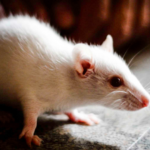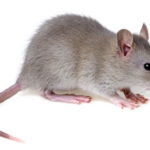Facts about mouse
 In ancient Egypt embalmed not only cats, but also mice;
In ancient Egypt embalmed not only cats, but also mice;- A white-skinned (or reindeer) mouse does not have a collarbone, so it can spread so that it will crawl into the centimeter mink in the floor;
- In the USA, there are more than 300 species of domestic mice;
- The old European sign says: if a mouse is not near the patient, this is a bad sign;
- According to popular beliefs, it is better not to have mice with mice: they “wear” the souls of the dead on their fragile backs;
- Some scientists believe that mice originated from rats;
- In Germany the meeting with the mouse promised happiness. But only with white. For the murder of the albino can be answered in court;
- Ancient Greek Apollo was considered a mouse god. In some temples, mice were kept in order to poll the gods. Their rapid reproduction was a sign of divine disposition;
- Mice can be very brave and courageous, sometimes they attack animals many times larger than themselves;
- You can put a mouse on the table, and it will not run away, because the mice are afraid to jump from a great height;
- Mice develop their own vitamin C;
- Mice adore bread;
- Mom-mice are happy to feed other people’s cubs;
- The Russian parable says that if the mouse regrets the uncleared remains of the dinner, the owners will have toothaches;
- Ancient Greeks and Indians believed that mice are lightning (most likely because the paws in the mouse are short, and the abdomen rubs against the ground, causing static discharges);
- The Japanese bred white mice 300 years ago;
- There are also blue mice;
- Front teeth-incisors of mice without roots;
- The word “mouse” came from the ancient Sanskrit word “mus”, that is, “thief.”




























